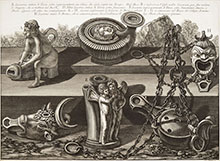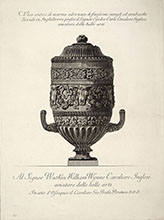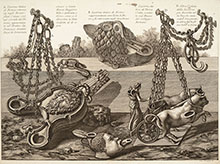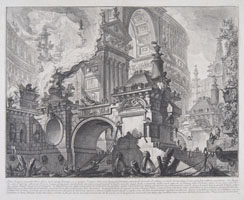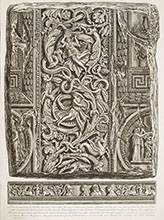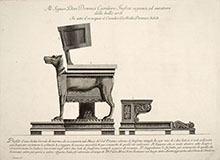Mogliano Veneto 1720 - Rome 1778
Piranesi's uncle Lucchesi gave him lessons in drawing, until in 1738 his father, a mason, sent him to Rome to study architecture and engraving. In 1741 he brought out a work on arches, bridges, and other remains of antiquity, a notable monument of black and white art. Piranesi settled permanently in Rome in 1745. He was a rapid and facile worker and etched more than 2000 large plates, full of detail, vigour, and brilliancy. The Carceri are his finest early prints; they depict ancient Roman or Baroque ruins converted into fantastic, visionary dungeons filled with mysterious scaffolding and instruments of torture. Among his best mature prints are the series Le Antichità romane , Le Vedute di Roma, and the views of the Greek temples at Paestum. These prints depict the buildings of classical and postclassical Rome and its vicinity and contributed considerably to Rome's fame and to the growth of classical archaeology and to the Neoclassical movement in art.
As a rule Piranesi drew directly on copper, and hence his work is bold, free, and spirited to a marked degree. His highly original etching technique produces rich textures and bold contrasts of light and shadow by means of intricate, repeated bitings of the copperplate. His unparalleled accuracy of depiction, his personal expression of the structures' dramatic and romantic grandeur, and his technical mastery made these prints some of the most original and impressive representations of architecture to be found in Western art.
